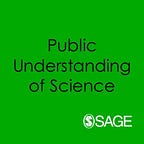Science Communication in Times of Crisis
Review by Antoinette Fage-Butler
The volume sets itself the task of addressing a research gap: contributing towards providing “a systematic description of how science communication and societal crises relate”.
There could hardly be a timelier title to match the current sense of global “crisis” on various levels — be it environmental, health and wellbeing, economic, and/or political — than that of this volume. It is the 96th title in the publisher’s series, Discourse Approaches to Politics, Society and Culture and it offers multidisciplinary perspectives on science communication, shedding light on the contemporary crises of the COVID-19 pandemic and climate change, and focusing on different cultural and linguistic settings.
The book’s attention to discourse is a clear strength of the volume. As Haddad, one of the contributors to the book reminds us, quoting Bratkovich, “the work of science is a linguistic act”. We might be tempted to add “among other things” to the quotation, to reflect the complexity of the interactions between the multitude of “actors” broadly understood in science, reflecting a Latourian perspective. However, a concerted focus on discourse in relation to science communication is indispensable if we are to improve understandings of science communication, from the macro-discourses of the infodemic, to meso-strategies of persuasion employed in public health communication, to the micro-level terminological choices used by science communicators. Each of these levels is represented in this volume.
The editor’s Introduction usefully sketches out the space in which to see the eight contributions of the book, quoting Horst et al’s definition of science communication as involving settings where “non-scientists” are part of the audiences, and Bucchi and Trench who understand science communication as society conversing about science. The work of Medin and Bang, for example, also sets the terms for the cultural exploration of science communication — and the need to recognise context, which is amply reflected in this volume.
The volume sets itself the task of addressing a research gap: contributing towards providing “a systematic description of how science communication and societal crises relate”. Hohaus links the notion of “societal crises” to post-normal situations which are characterised by complexity, uncertainty, values, and time-pressures. It would have been good to have made a little more explicit the notion of a “crisis” and how it intersects with post-normal situations. But this is a minor quibble — and, if anything, it underscores the need for further theorisation that extends beyond the confines of this book.
Beyond its empirical findings, another clear strength of this book is its showcasing of various methodological approaches to support the analyses produced in the chapters. The chapter by Böhnert and Reszke applied discourse analysis combined with theoretical positions from philosophy of science to argue that the factuality of statements, while necessary during times of crisis, may not be sufficient and that there needs to be a focus on statements’ plausibility.
Rhetorical strategies are analysed in the chapter by Syfert who examined authority appeals in the communication of scientific consensus in two open letters written by the Union of Concerned Scientists. Looking closely at linguistic choices, Bowker explored the terminology work evident in the Government of Canada’s Glossary on the COVID-19 Pandemic, while Haddad employed a multilingual corpus-based approach to analyse the transfer of COVID-19 neologisms from specialised language into the broader vernacular.
El-Dakhs analysed persuasion strategies in tweets from Saudi and Australian departments of health to encourage the uptake of COVID-19 vaccines. The chapter by Molek-Kozakowska and Struchkova combined content analysis, discourse analysis and news values analysis to compare the content, style and advocacy evident in three media outlets in Poland that communicated about the risks of the AstraZeneca COVID-19 vaccine.
A combination of a qualitative discourse-historical approach and quantitative corpus linguistics supported the analysis in Koka-Helvaci’s chapter on the discursive representation of the coronavirus crisis by the American alt-right. Finally, the challenges and procedures of crisis communication are in focus in Callahan and Jensen’s chapter that analysed the US response to the COVID-19 pandemic and rounds off the contributions to the book.
A concluding chapter to the volume would have been beneficial, bringing together the findings and highlighting avenues for future inquiry in the field of science communication that focus on discourse. Notwithstanding that, the volume certainly represents a valuable contribution to the field of science communication, and, if anything, indicates through its forays into specific and contextual aspects of discourse that much work remains to be done.
Antoinette Fage-Butler is an Associate Professor at the School of Communication and Culture, Aarhus University, Denmark. Her research interests include discursive aspects of risk and trust, and how values play a role in science communication. With Aarhus colleagues Ledderer and Hvidtfelt Nielsen, she published ‘Public trust and mistrust of climate science: A meta-narrative review’, Public Understanding of Science, 2022, 31(7): 832–846.
